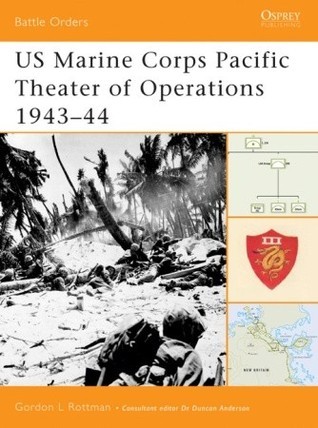


Books in series

US Marine Corps Pacific Theater of Operations
1941-43
2004

Wellington's Army In The Peninsula 1809-14
2004

US Armored Divisions
The European Theater of Operations, 1944-45
2004

German Airborne Divisions
Blitzkrieg 1940–41
2004

US Army in the Plains Indian Wars 1865-1891
2004

The American Expeditionary Forces in World War I
2005

US Marine Corps Pacific Theater of Operations 1943–44
2004

US Marine Corps Pacific Theater of Operations 1944–45
2004

Japanese Army in World War II
Conquest of the Pacific 1941–42
2005

US Tank and Tank Destroyer Battalions in the ETO 1944-45
2005

The British Army in the Far East 1941–45
2005

Japanese Army In World War II
The South Pacific And New Guinea, 1942–43
2005

German Airborne Divisions
Mediterranean Theatre 1942–45
2005

The British Expeditionary Force 1914–15
2005

US Army Infantry Divisions 1942–43
2006

British Commandos 1940-46
2006

The US Marine Corps in the Vietnam War
III Marine Amphibious Force 1965-75
2006

Rommel's Afrika Korps
Tobruk to El Alamein
2006

US Armored Units in the North Africa and Italian Campaigns 1942 45
2006

US Airborne Units in the Mediterranean Theater 1942–44
2006

Desert Raiders
Axis and Allied Special Forces 1940-43
2007

US Airborne Divisions in the ETO 1944–45
2007

The Roman Army of the Punic Wars 264-146 BC
2007

Desert Rats
British 8th Army in North Africa 1941–43
2007

The British Army on the Western Front 1916
2007

Mobile Strike Forces in Vietnam 1966–70
2007

The Royal Navy 1793-1815
2007

Panzer Divisions
The Blitzkrieg Years 1939–40
2007

The US Army in the Vietnam War 1965-73
2008

The Roman Army
The Civil Wars 88-31 BC
2008

Panzer Divisions
The Eastern Front 1941-43
2008

Samurai Armies 1467-1649
2008

The Roman Army of the Principate 27 BC-AD 117
2009

Panzer Divisions 1944-1945
2009
Authors

Steven Zaloga is an author and defense analyst known worldwide for his articles and publications on military technology. He has written over a hundred books on military technology and military history, including “Armored Thunderbolt: The US Army Sherman in World War II”, one of the most highly regarded histories of the Sherman Tank. His books have been translated into Japanese, German, Polish, Czech, Romanian, and Russian. He was a special correspondent for Jane’s Intelligence Review and is on the executive board of the Journal of Slavic Military Studies and the New York Military Affairs Symposium. From 1987 through 1992, he was the writer/producer for Video Ordnance Inc., preparing their TV series Firepower. He holds a BA in history from Union College and an MA in history from Columbia University. Mr. Zaloga is also a noted scale armor modeler and is a host/moderator of the World War II Allied Discussion group at Missing-Lynx.com, a modelling website. He is a frequent contributor to the UK-based modeling magazine Military Modelling. He is a member of the Armor Modeling and Preservation Society.


Gordon L Rottman served for 26 years in the US Army in Special Forces, airborne infantry, long-range reconnaissance patrol, and military intelligence assignments in the Regular Army, Army National Guard, and Army Reserve. He has worked as a Special Operations Forces scenario writer for 14 years at the Army' s Joint Readiness Training Center, Fort Polk, Louisiana where he developed training exercises for Special Forces. Gordon began writing military history books in 1984 and is currently a full-time author. He has written 50 books for Osprey.He is married with four children and lives in Cypress, Texas.

juegos gratis jogos gry dla dziewczyn
